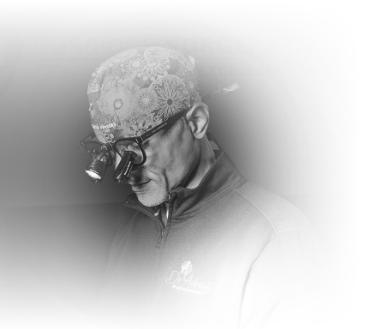QuickLinks
The nose is one common problem area for many people. Whether you have a bump you want to be smoothed out, are struggling with a deviated septum, or simply want a nose more proportional to the rest of your face, you are not alone.
That’s where we come in at Dr. Andrews Plastic Surgery. Dr. Andrews can address all these concerns and more with a customized rhinoplasty procedure.
What is Rhinoplasty?
A rhinoplasty, often referred to as a nose job, is a procedure used to reshape the nose, making it more proportional with the rest of the face. It can also address any structural issues that may be impairing your breathing.
The surgical procedure can adjust the width of the bridge, change the size and shape of the nostrils, remove humps or depressions in the bridge, reshape the nasal tip, and address any nasal asymmetry.
Who is a Good Candidate for Rhinoplasty?
How do you know if you’re a good candidate for a rhinoplasty? During your consultation, Dr. Andrews will look over your medical history, medications, and concerns and then determine if it’s the right procedure for you.
Some of the qualifications that make someone a good candidate for rhinoplasty include:
- Your facial growth is complete
- You are in generally good health
- You’re a nonsmoker
- You have realistic expectations
- You have a positive outlook
- You have issues with the size and shape of your nose, or you’re having problems breathing due to your internal nasal structure.
The Rhinoplasty Procedure
Before your surgery, Dr. Andrews will discuss whether an open or closed rhinoplasty is the best option for you. On the day of surgery, general anesthesia or IV sedation will be administered.
With a closed rhinoplasty, the incisions are hidden inside the nose, while with an open rhinoplasty, the incisions are made across the narrow strip of tissue that separates the nostrils.
These incisions allow Dr. Andrews to raise the skin that covers the nasal structure to reshape it and give you the results you’re looking for. Bone and cartilage may be removed, and when necessary, additional cartilage can be added with cartilage grafts.
If you have a deviated septum, Dr. Andrews will straighten the septum and reduce the projections in the nose to help with your breathing.
Once all the changes have been made, the skin will be redraped over the nose (in an open rhinoplasty), and the incisions will be closed. The surgery can take anywhere from 1-3 hours.
Recovery
During your rhinoplasty recovery, a splint and/or packing may be placed inside your nose, and another splint and/or bandages will be placed on the outside to support and protect the new structure while it heals. You will be able to go home the same day, but someone will need to drive you. You will likely have some swelling, bruising, and discomfort.
Some of the swelling will go down in the first few weeks after surgery, but it can take up to a year for all the swelling to go down. During that time, you will notice small changes to your nose as the results become more apparent.
Dr. Andrews will give you specific instructions on how to care for your incisions, what medications you can take to ease discomfort, and when to schedule follow-up appointments.
After surgery, you’ll want to rest as much as possible with your head elevated to reduce the bleeding and swelling. The bandages may come off one to seven days after surgery, and the splint usually comes off after a week.
In the first days following surgery, you’ll also want to avoid physical activities and blowing your nose. You will also need to take baths instead of showers and avoid smiling and laughing. Additionally, you’ll want to stick to clothes you don’t pull over your head.

DR. KAHLIL ANDREWS
Dr. Kahlil Andrews is a board-certified plastic surgeon from Los Angeles specializing in plastic, cosmetic and reconstructive surgery.
At his location in Coralville, Iowa, Dr. Andrews’ academic and technical achievements are only exceeded by his commitment to patient care. Whether they are seeking reconstructive breast surgery, outpatient injectable treatment, or a full-blown mommy makeover, Dr. Andrews gives his full attention and focus on achieving excellent patient outcomes.
MEET DR. ANDREWSTestimonials
“Schedule A Consultation
Have you always wanted to change the shape of your nose? Why wait any longer? Schedule a consultation at Dr. Andrews Plastic Surgery today! Dr. Andrews will listen to your concerns and goals, examine the structure of your nose, and then build a customized treatment plan for you.
Start enjoying what you see when you look in the mirror! Schedule a consultation at our Coralville, IA office by calling us at (319) 800-6877 or using our online scheduling form.










